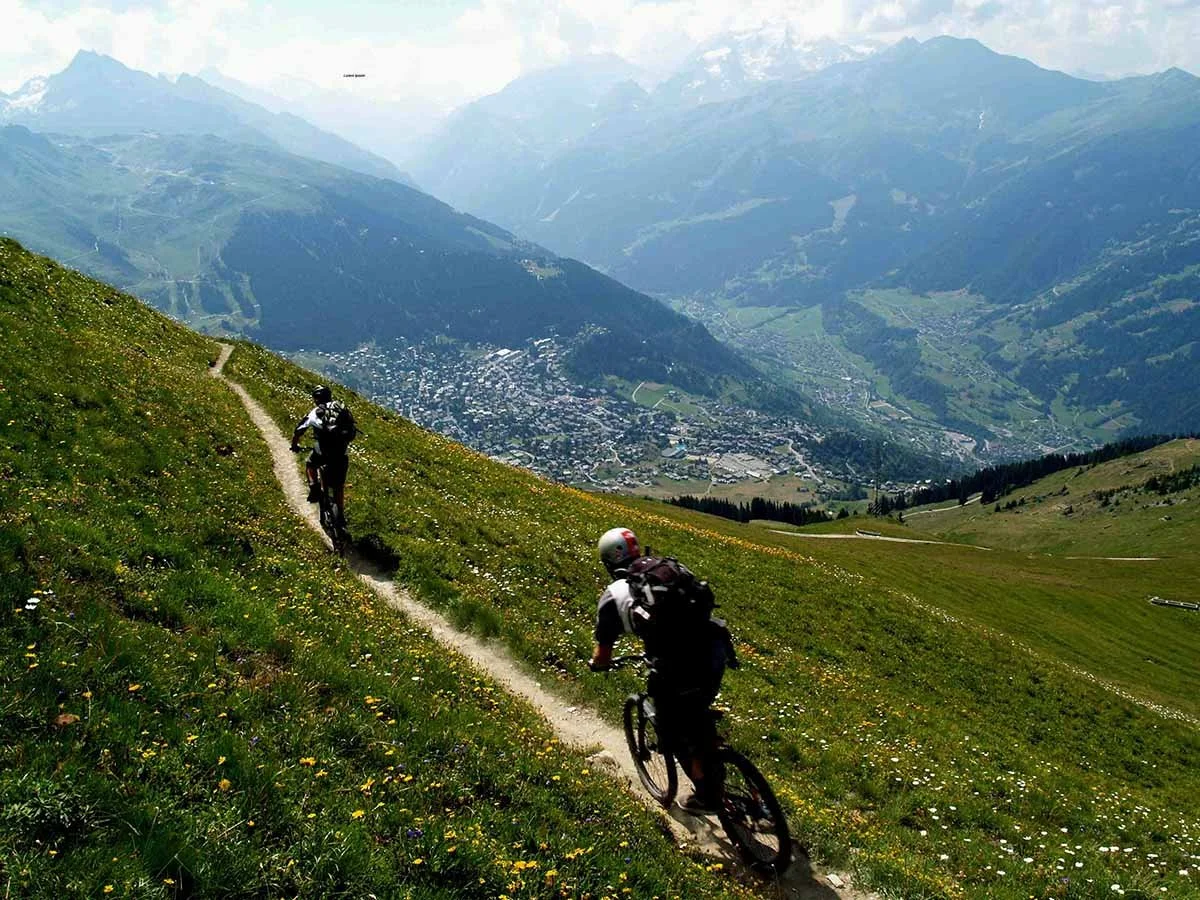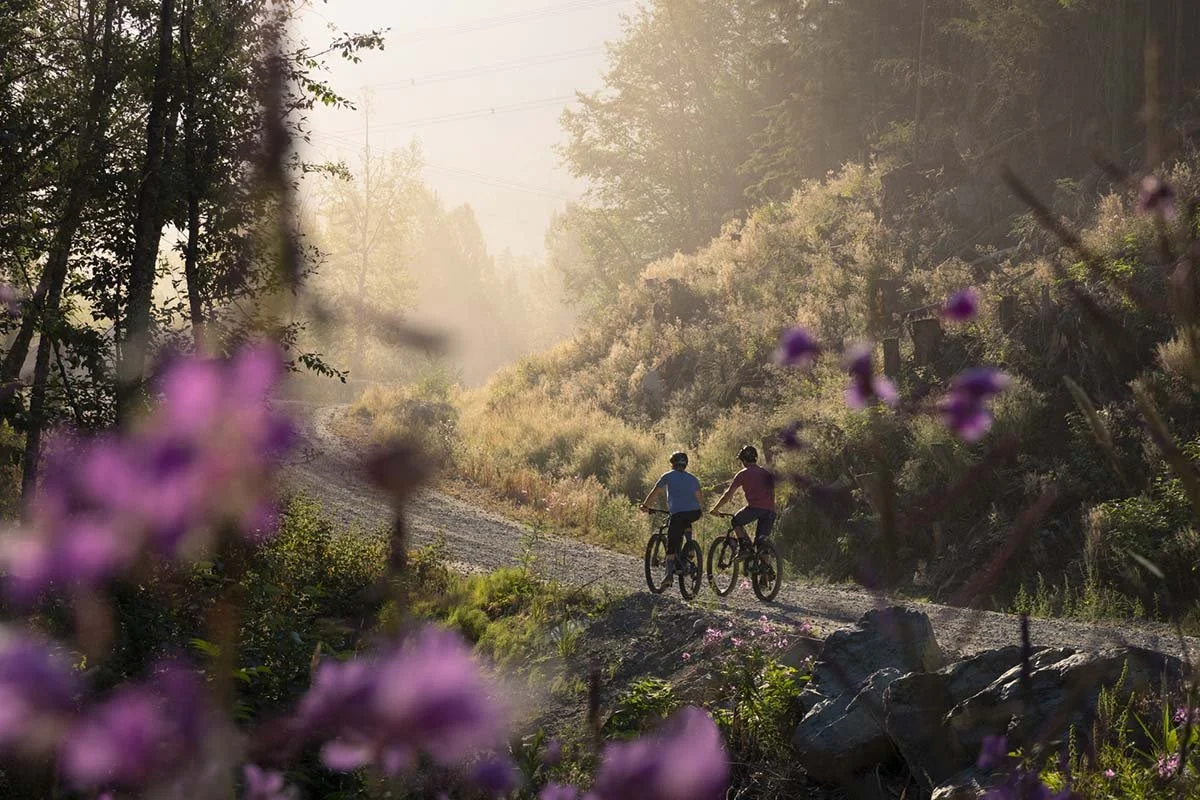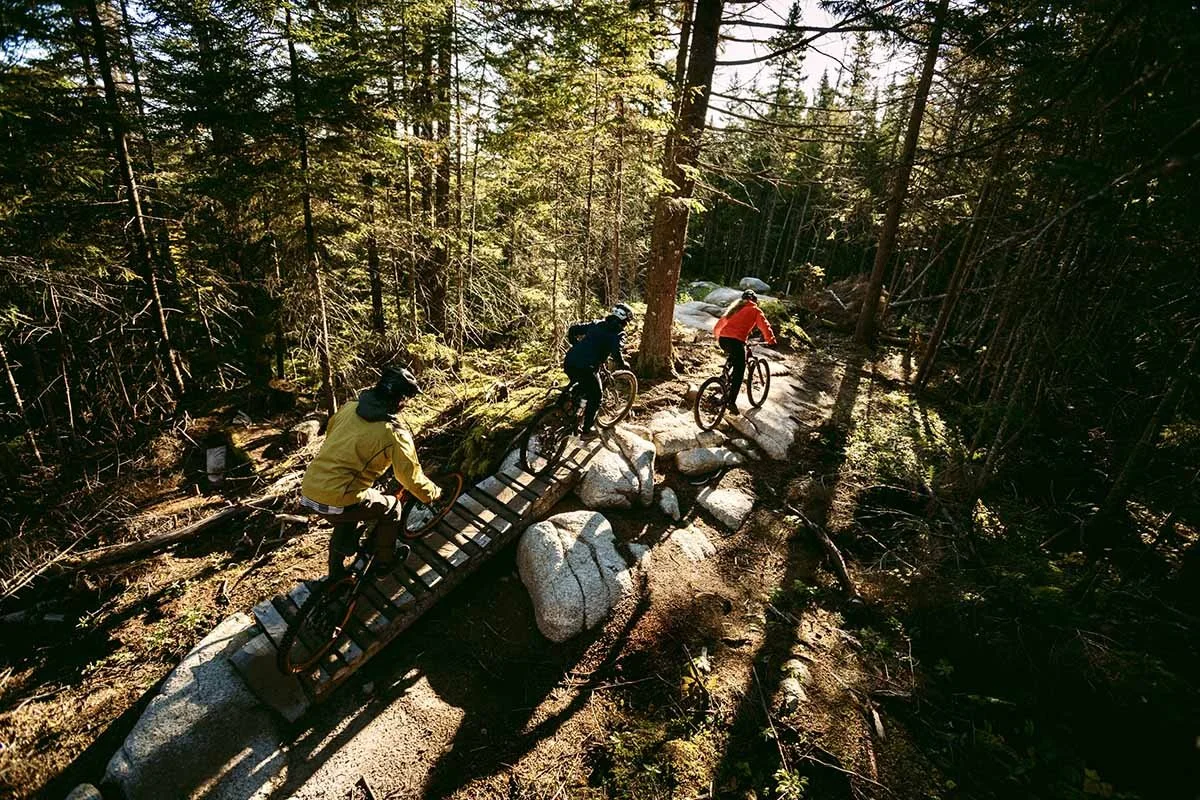The Ultimate Guide to Mountain Biking Trails: Mastering Every Terrain
One of the greatest joys of mountain biking is exploring the diverse mountain bike landscapes and experiencing the variety of mountain bike terrain types. While we're all familiar with our local trails, there's a whole world of terrain out there waiting to be discovered. From infamous rock gardens to silky smooth loam, each surface brings its own challenges and rewards. In this guide, we'll dive into different terrain types, offering tips and insights to help you conquer whatever the trail throws your way. So gear up and get ready to expand your mountain biking horizons!
Key Takeaways
Rock Gardens: Navigate rocky sections with precision.
Slickrock: Utilize unique traction on sandstone trails.
Loam: Enjoy smooth, grippy rides on ideal soil.
Snow-Covered Routes: Adapt to winter biking with fat tires.
Mud and Clay: Tackle slippery conditions with careful tire choice.
Sand: Maintain momentum on loose or packed sand.
Wet Conditions: Cautious braking and cornering on slick trails.
Dry Conditions: Manage traction on dusty trails.
MTB trail types
Singletrack:
Singletrack trails are the holy grail of mountain biking, the types of mountain bike trails that make our hearts skip a beat. These narrow, winding paths, designed for one-way traffic, are where the magic happens. They challenge your skills, push your limits, and reward you with pure, unadulterated riding joy. Every twist and turn is an opportunity to connect with the trail and experience the thrill of mountain biking at its best. So gear up, hit the singletrack, and let the adventure begin.
Doubletrack:
Grab a buddy and ride side by side on these wider trails. Doubletrack trails offer a more social riding experience, perfect for chatting and enjoying the scenery together. Doubletrack trails, in contrast to singletrack, offer a more social riding experience, perfect for chatting and enjoying the scenery together.
Fire Roads:
These broad paths are the unsung heroes of the mountain biking world. Used for access and maintenance, fire roads provide a reliable route through the wilderness and are great for covering ground quickly.
Terrain Parks:
For those who love a bit of airtime, terrain parks are your playground. Packed with jumps, berms, and drops, these areas are designed to test your skills and pump up the adrenaline.
Each trail type offers a unique experience, so mix it up and enjoy the ride.
Terrain Varieties
Rock Gardens:
Mastering rock gardens is a rite of passage for mountain bikers. These rocky sections demand precision and control. Approach with a relaxed grip, keeping your arms and legs loose to absorb shocks. Focus on your line, choosing a path that allows for smooth transitions between rocks. Maintain a steady speed, too slow and you'll lose momentum, too fast and you risk losing control. Practicing on rock gardens not only improves your technical skills but also boosts your confidence on different types of terrain.
Slickrock:
Slickrock trails offer a unique riding experience. The sandstone or limestone surface provides exceptional traction (unless wet or mossy), allowing for steep climbs and descents. To tackle slickrock, lower your tire pressure to increase the contact patch for better grip. Use your body weight to steer, leaning into turns and shifting your weight forward or back to maintain balance. Riding slickrock is about trusting your tires and your skills, as the friction between rock and rubber keeps you glued to the trail.
Hard Pack Dirt:
Hard pack dirt trails offer a unique riding experience characterized by their firm and compacted surfaces. These trails are often smooth and fast, providing excellent traction for riders. However, they can also become slippery when wet, so it's essential to adjust your riding style accordingly.
When riding on hard pack dirt, you can take advantage of the firm surface to maintain speed and flow through corners. However, be cautious of loose gravel or rocks that may reduce traction, especially in dry conditions. It's crucial to stay balanced and centered on your bike, distributing your weight evenly to maximize control.
To navigate hard pack dirt trails effectively, consider using tires with a tread pattern that provides optimal grip for these conditions. Additionally, adjust your tire pressure to suit the firmness of the trail, ensuring a comfortable and controlled ride.
Overall, hard pack dirt trails offer a fun and fast-paced riding experience, perfect for riders looking to test their skills and enjoy the thrill of mountain biking on firm ground.
Snow-Covered Routes:
Winter biking, or spring-thaw riding on snow-covered routes presents a serene, yet challenging adventure. Fat bikes, with their wide tires, are ideal for snow as they provide increased flotation. Lowering tire pressure helps to increase the contact area, improving traction on the soft surface. Riding in snow requires a gentle touch, with smooth pedaling and gradual braking to avoid sinking or sliding. Embrace the quiet beauty of snow-covered landscapes, but be prepared for the physical exertion of plowing through the powder. We’ve often encountered a fresh snow day on our Switzerland MTB trips, even in the height of summer.
Mud and Clay:
Tackling muddy or clay-rich trails tests your bike handling skills and patience. Tropical and volcanic destinations like Costa Rica, Madeira Portugal and Hawaii will have some days that are wet and slick clay. The key is to keep your weight centered and maintain a steady pace to prevent slipping. Opt for tires with deep, widely spaced treads to shed mud more effectively. When encountering deep mud, it's often better to dismount and walk to avoid damaging the trail. Riding in mud can be a messy affair, but it's also a fun way to improve your balance and control.
Sand:
Whether it's the loose sand of a beach trail or the packed sand of a desert path, riding on sand requires a different approach. In loose sand, momentum is your friend. Keep your speed up and use a gear that allows you to pedal smoothly without digging in. For packed sand, you can treat it more like a hardpack trail, but be wary of soft patches that can catch you off guard. Sand riding can be taxing, but it's an excellent workout and a unique experience. There are some sand sections on our Baja Mexico and Morocco mtb trips. E-bikes and bigger tires are a great help in loose sand as they offer the assist and a wider tire that floats.
Loam:
Loam terrain is a mountain biker's dream. This soil mix—comprising sand, silt, and clay—delivers a forgiving yet responsive surface that enhances your ride through the forest. As you carve through turns on loam, the soft earth absorbs your bike's impact, making it ideal for those looking to push their limits without the harsh feedback of rockier trails. To truly enjoy loam, keep your tires slightly softer to maximize traction, and let the natural 'hero dirt' provide the perfect balance of grip and slide. Riding on loam feels like sculpting through nature, where every turn and dip lets you feel more connected to the trail.
Wet Conditions:
Riding after, or during a rainstorm brings its own set of challenges. Wet conditions make trails slippery and unpredictable. Lower your tire pressure for better traction, and be mindful of slippery roots and rocks. Brake early and gently to avoid skidding, and take corners with caution. Wet rides can be muddy and challenging, but they also offer a fresh perspective on familiar trails and improve your technical skills. It’s pretty common to encounter rainy days while riding in the mountains. We’ve had some wet and very memorable riding days in Norway’s Lofoten Islands and Iceland.
Dry Conditions:
Dry, dusty trails are common in arid regions and during summer months. In these conditions, traction can be limited, and loose dust can make the trail surface unpredictable. Keep your weight back and lower your center of gravity to maintain stability. Avoid sharp turns and sudden braking, which can cause skidding. Riding in dry conditions can be tough on your bike, so regular maintenance including chain lube is key to keeping everything running smoothly. Some of our driest trips include Baja Mexico and and Botswana on our Southern Africa MTB safari.
Each terrain type offers a unique set of challenges and rewards, providing endless opportunities for adventure and skill development. Embrace the diversity of mountain bike terrains and enjoy the ride.
Difficulty ratings
When it comes to mountain biking, understanding trail difficulty ratings is crucial for a safe and enjoyable ride. In the US, the International Mountain Bicycling Association (IMBA) has set a standard with a color-coded system: green for easy, blue for intermediate, black for difficult, and double black for expert. This system helps riders gauge the technical challenges and physical demands of a trail. In Europe, the situation is a bit different. Most trails are shared with hikers and are not specifically graded for biking, except in bike parks and ski resorts where a similar color-coded system is often used. Always check local guidelines and be aware that trail difficulties can change due to weather and wear. Riding within your skill level ensures a great experience on trails worldwide.
Trail Riding Techniques
Adjusting Speed:
Speed control is a fundamental skill in mountain biking. On descents, modulate your speed with controlled braking, avoiding sudden stops that can lead to skidding. Uphill, maintain a steady pace to conserve energy. In technical sections, slow down to navigate obstacles safely.
Line Choice:
Selecting the right path is crucial for smooth riding. Look ahead and plan your line, avoiding obstacles when possible. Use the terrain to your advantage, choosing lines that maintain momentum and provide the best traction.
BODY POSITION:
Staying loose and balanced is key to handling varied terrain. On descents, lower your center of gravity by bending your knees and leaning back. Keep your elbows out and arms relaxed to absorb shocks. Uphill, shift your weight forward to maintain traction on the rear wheel.
To further hone your skills:
Consider enrolling in a mountain bike skills camp like our Baja Mexico camp or skill’s retreats in Finale Ligure Italy or Peru with Sweet Skills coaching. These camps offer personalized instruction and guided practice to help you master the techniques and take your riding to the next level.
Finding MTB Trails
Discovering new trails is an exciting part of mountain biking. Here are some resources to help you find your next adventure:
Online Trail Databases:
Websites like Trailforks and MTB Project offer extensive databases of trails worldwide, complete with descriptions, difficulty ratings, and user reviews.
Topo Maps:
Topographic maps can help you identify potential riding areas and understand the terrain. Look for apps or websites that offer detailed topo maps for your region.
Forums and Social Media:
Join mountain biking forums and social media groups to get recommendations from fellow riders. Local biking communities often share hidden gems and favorite routes.
Bike Shops and Clubs:
Local bike shops and clubs are great resources for trail information. They can provide insights into popular routes and lesser-known trails in the area.
Tour Operators and Guides:
Consider going on a mountain bike trip with a tour operator or guide. They can provide expert knowledge of the trails, handle logistics, and ensure a memorable riding experience.
Remember to respect trail rules and the environment while exploring new paths. Happy trail hunting!
Conclusion
As we wrap up this journey through the diverse terrains and trails of mountain biking, let's remember the importance of exploration and respect for the mountain bike landscape and terrain types. Every ride is an opportunity to discover new landscapes, challenge ourselves, and connect with nature. Let's tread lightly, leaving trails as pristine as we found them, and share our experiences with fellow riders.
For a deeper dive into the specific rules and behaviors that enhance our experiences and ensure safety and sustainability on the trails, check out our mountain biking etiquette article. The world of mountain biking is vast and varied—embrace the adventure, respect the land, and keep the spirit of exploration alive!
MTB Terrain Type FAQS
-
Singletrack dirt trails, typically 6 to 24 inches wide, are often considered the ideal terrain for mountain biking. These trails can range from smooth, gently winding paths to highly technical routes filled with features that demand advanced skills and intense focus.
-
Check trail ratings on platforms like Trailforks or MTB Project, starting with trails that match your experience level. Green trails are usually easiest, progressing to more challenging black and double black trails.
-
To prepare for different terrains Research the terrain, adjust your bike setup (e.g., tire pressure and suspension), and practice relevant skills. Always carry essentials like water, tools, and a first-aid kit.
-
Practice regularly, take skills courses, and ride with experienced bikers. Focus on mastering one terrain at a time and gradually build up your skills.
READY TO BOOK YOUR MOUNTAIN BIKE TRIP?
Ready to elevate your mountain biking experience? Join us on one of our mountain bike trips, where we offer mountain bike skill camps, electric mountain bike (eMTB) adventures, and journeys to global destinations. Whether you're looking to improve your technique or explore breathtaking landscapes, we have something for every rider. Contact us today to embark on an unforgettable mountain biking adventure!















